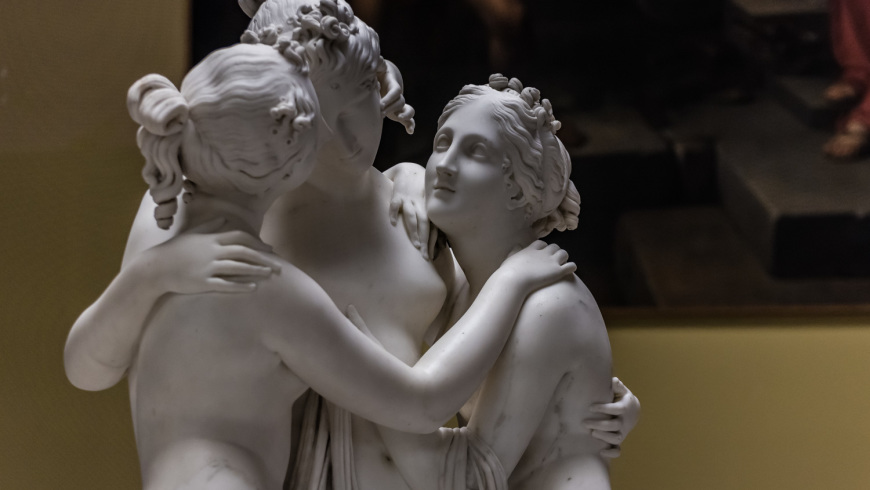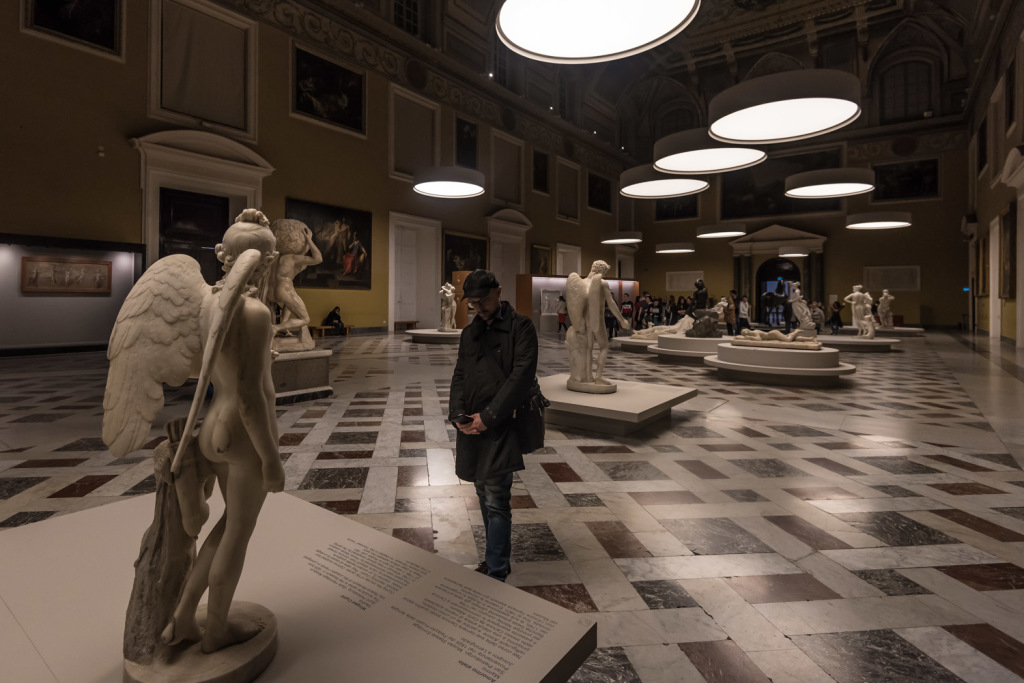
“To imitate, not to copy the ancients” to “become inimitable” was the warning of Johann Joachim Winckelmann (1717 – 1768), the most famous of the 700’s art historians (and superintendent of the antiquities of Rome from 1764) that Antonio Canova (1757 • 1822) followed for the whole course of his artistic activity. Thus it became “The last of the ancients and the first of the moderns”. For the first time in the exhibition at MANN is analyzed the relationship of continuity that linked Canova to the classical world, making him a “new Phidias” in the eyes of contemporaries.
Arranged on two floors of the Museum, the exhibition presents the varied artistic production of the artist from Possagno and includes first-rate masterpieces, starting from the group of Graces, from the Ermitage in St. Petersburg.
Other important international loans characterize the exhibition: five other marbles from the Ermitage (which boasts the largest Canova collection in the world: The Winged Eros, Ebe, The Dancer with hands on hips, Love and standing Psyche, the head of the Genius of Death) and then the imposing statue, almost three meters high, depicting Peace, coming from Kiev, and the Apollo crowning from the Getty Museum in Los Angeles. To these are added, among other masterpieces in marble gathered in the Salone della Meridiana, the penitent Magdalene from Genoa, the Paris from the Civic Museum of Asolo and the Stele Mellerio.
Two installations dedicated to Antonio Canova are also housed in two sets located in the Museum Hall.





















